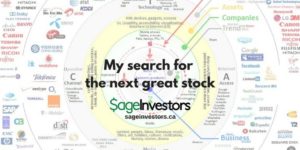
By John De Goey, CFP, CIM
Special to the Financial Independence Hub
By now, you will have almost certainly heard a few stories about the folly of stock picking as a viable way to beat the market. The problem that high net worth (HNW) investors are disproportionately saddled with is they are bombarded with people who purport to be able to add value by doing things that, in aggregate, cannot possibly be true.
There are three basic equity building blocks investors might use to mix and match in their portfolio construction: individual securities, ETFs and / or mutual funds. Very few HNW investors use funds, but I will mention them for the sake of completeness and comparison. Mostly, funds are used as an example of what NOT to do.
To provide structure and consistency to this discussion, I should add there are a couple industry terms you might be somewhat familiar with that nonetheless need to be defined. They are:
Alpha – The pursuit of reliable, consistent and superior risk-adjusted returns; and:
Closet Indexing – The practice of masquerading as an active manager while holding a portfolio basket that nearly replicates the index it tracks.
No matter what vehicles are used, these two concepts need to be considered when assessing options.
Dreams versus Reality
There’s a simple way to think of them. They are, respectively, the dream and the reality of how most traditional mutual funds are managed.
Everyone wants Alpha at a micro (personal) level, but Alpha does not even exist on a macro (aggregate) level. A metaphor many use is that no matter how high anyone’s mark is, if everyone else in the class has a high mark, the class will have a high average, but it will be difficult to beat the average. This was simply explained by a Nobel prize winner named William F. Sharpe of Stanford, who wrote a paper about 30 years ago called “The Arithmetic of Active Management.”
In it, he showed the self-evident logic that any market is made up of active managers (traders) and passive managers (benchmark replicators). Any benchmark (such as the TSX) is merely the sum of all active and passive participants. Seeing as the passive people merely replicate the benchmark, their returns will equal the return of the benchmark minus their fees. It follows that the average return of all active managers will also equal the total benchmark minus fees. Since average active fees exceed average passive fees, it logically follows that the average passively managed dollar must outperform the average actively managed dollar. Continue Reading…
Share this:
- Click to share on X (Opens in new window) X
- Click to share on LinkedIn (Opens in new window) LinkedIn
- Click to share on Facebook (Opens in new window) Facebook
- Click to share on Reddit (Opens in new window) Reddit
- Click to email a link to a friend (Opens in new window) Email
- Click to print (Opens in new window) Print





